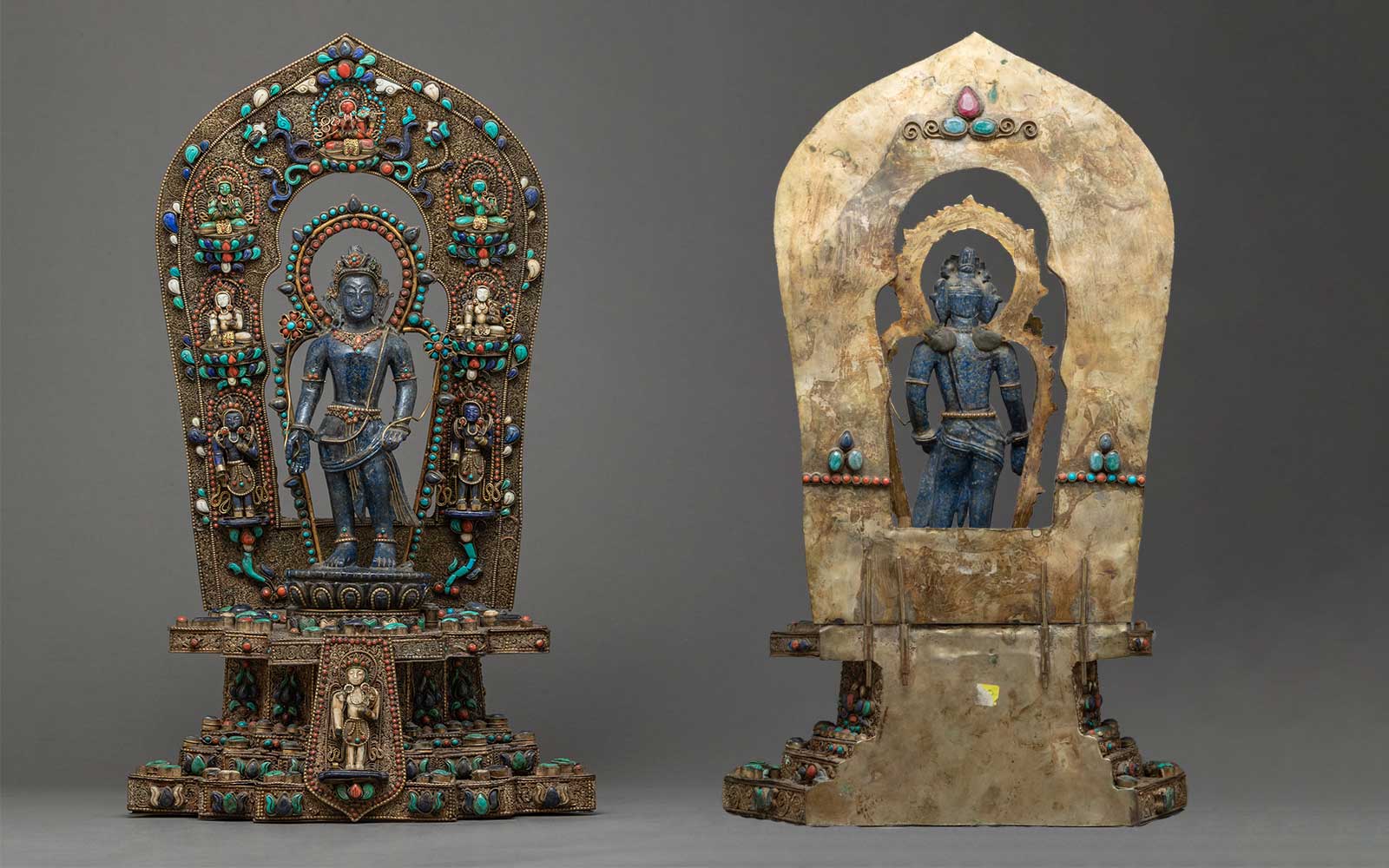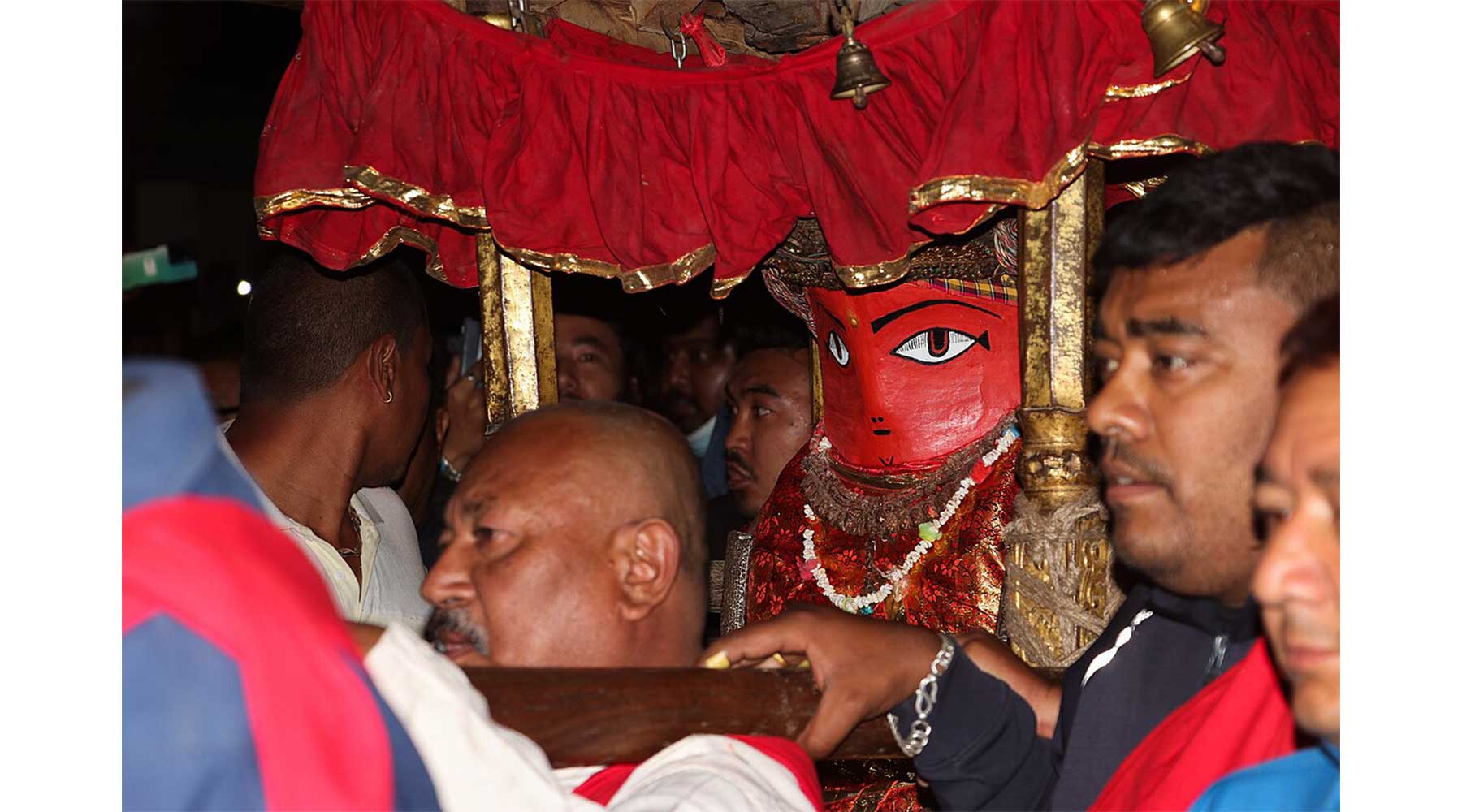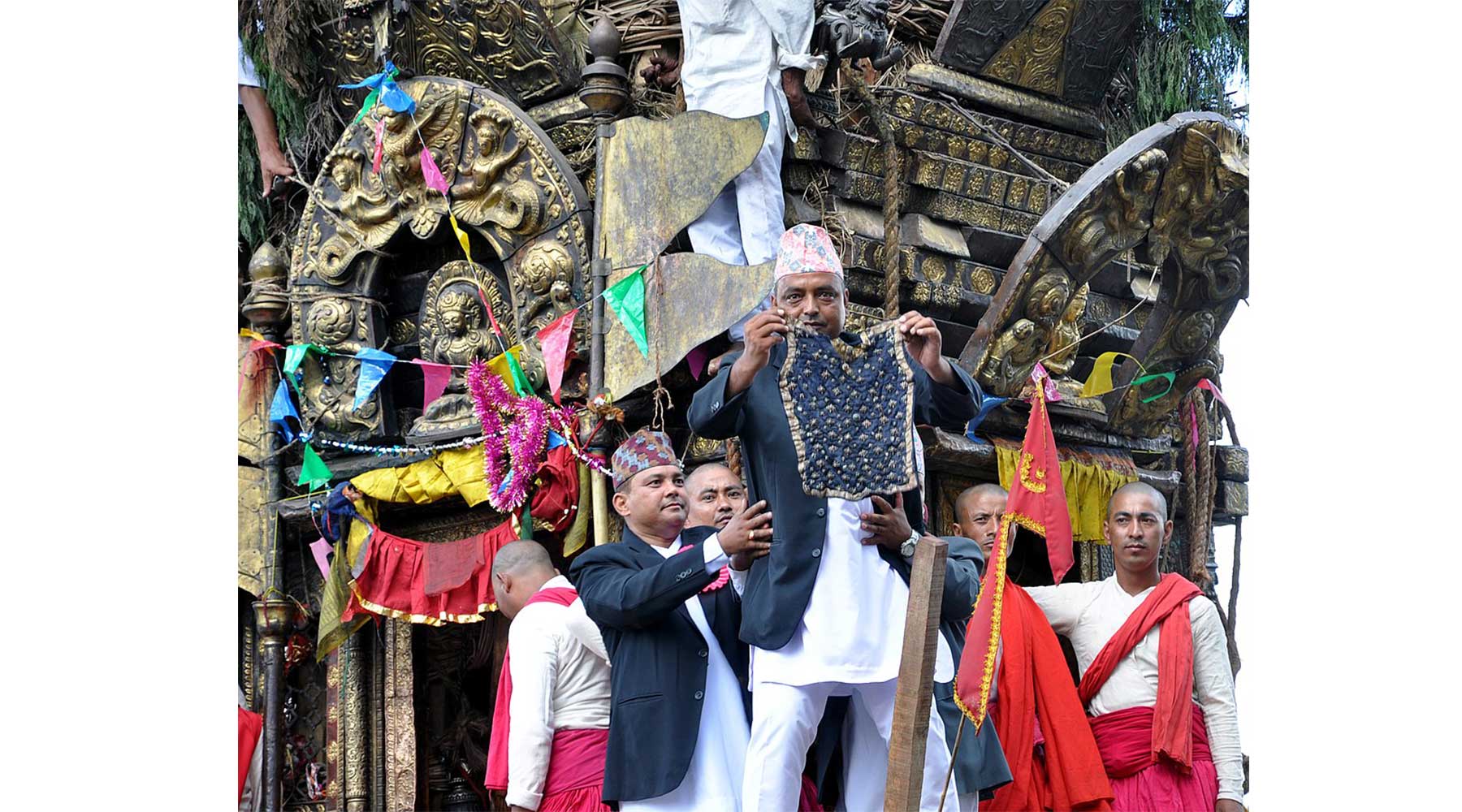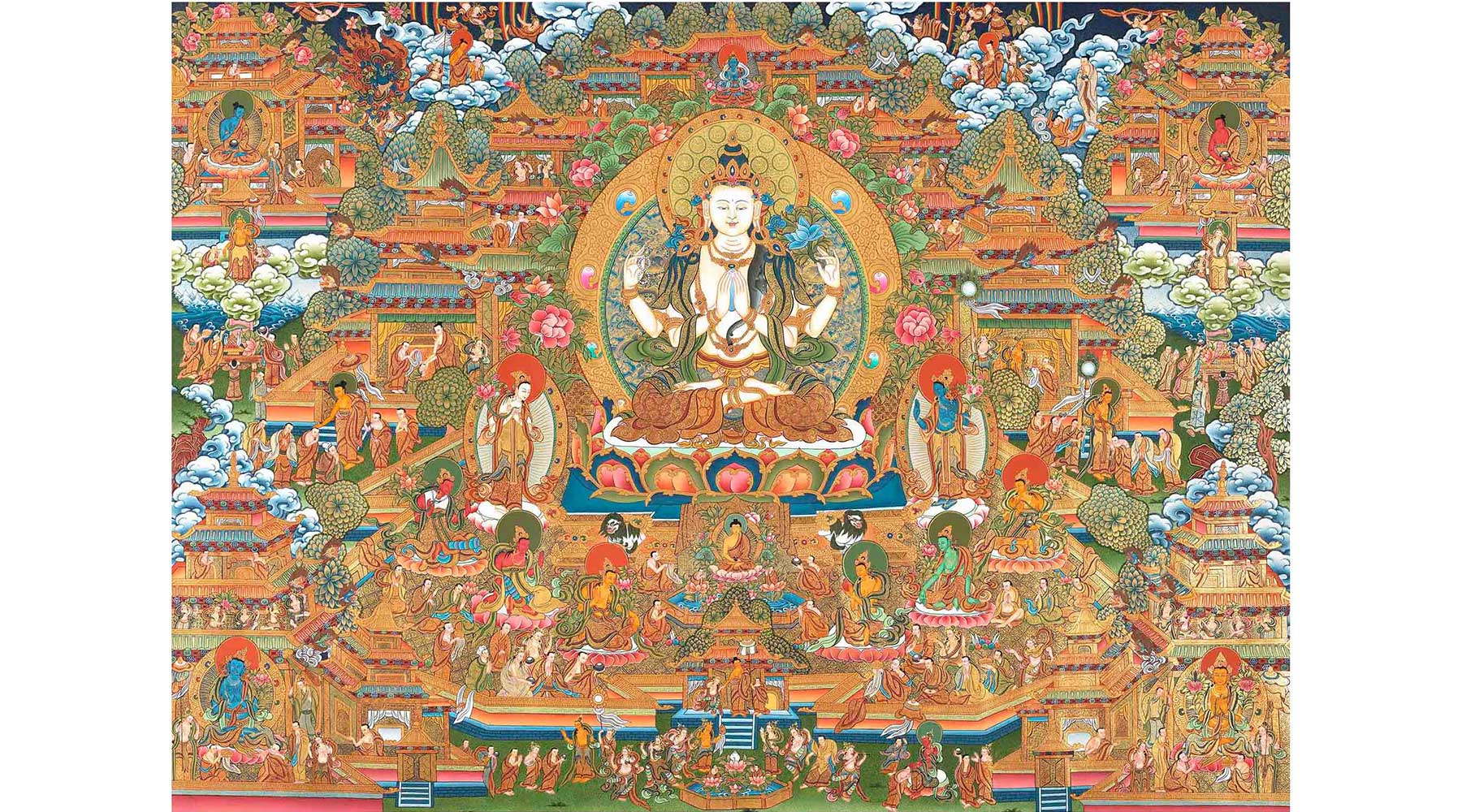Rato Machindranath: The Compassionate Rain God of Nepal
The deity of rain and wealth, Rato Machindranath, is a significant figure in Buddhism and Hinduism in Nepal's Kathmandu Valley. He assures rain and agricultural productivity, as evidenced by his yearly celebration, one of the biggest and liveliest in the area. In the life of the Newar people, this deity—known for his kindness and generosity—integrates practical agricultural demands with spiritual devotion.
The Sanskrit terms "Machcnhe," "Indra," and "Nath" are combined to form the name Machchhendranath. "Nath" signifies a lord of all, "Machchhe" a distant land or fish, and "Indra" the rain deity or King of Heaven. "Machchhendranath" is created when these three words are joined together. How you interpret the phrase might refer to a rain deity, a god delivered from a far-off place, or a lord of all living things.
- The Kathmandu Valley is home to four Machhendranathas. There are two white and two red.
- During the first half of the year, the renowned red Machchhendranath dwells in Bungamati and Patan during the second half.
- At the summit of Kirtipur's Chovar hill is a magnificent temple home to the second red Machchhendranath.
- The other Machchhendranath is located in Nala, around 15 km east of Kathmandu, while the white one, known as Jan-Ma-Deo, is situated at Jan-Baha, in the center of Kathmandu.
While the white Machchhendranaths are worshipped for good health, the red Machchhendranaths are adored for excellent agricultural harvests. Their collective name is "Karunamaya"—the deity of mercy.
Avalokiteshvara, the Bodhisattva of Compassion

Buddhism regards Rato Machindranath as a manifestation of the compassionate bodhisattva Avalokiteshvara. As the embodiment of all Buddhas' compassion and knowledge, Avalokiteshvara is revered for her ability to end suffering and establish universal peace. The deity is worshipped as the valley's guardian, protecting its people from danger and disaster.
Mythological Origins: Rato Machindranath History
The origins of Rato Machindranath are steeped in legends that reflect the deep spiritual heritage of Nepal.
The legend of Machchhendranath relates to a 12 drought in the Kathmandu Valley. It describes how the kings of Bhaktapur, Patan, and Kathmandu worked together to bring the god Machchhendranath from a distant land to end the protracted and persistent drought.
The 12 Year Drought: Gorakhnath And Machindranath
A sage named Gorakhnath resided in Gorkha and decided to travel to the Kathmandu Valley. He walked around Kathmandu, asking people for alms, as it is customary for ascetics to survive on the kindness of strangers.
The Kathmandu Valley is home to three important cities: Kathmandu, Bhaktapur, and Lalitpur, formerly Patan.
It became apparent that Patan's residents needed to learn more about Gorakhnath. They declined to give him anything in charity and showed the esteemed sage minimal regard.
Few hold more fury than a sage who has been wronged. Gorakhnath set out to exact revenge for the insult and visited the location of the nine snakes that brought rain. He is reported to have entered a profound state of meditation after sitting on his head there. That season and the years that followed saw no rain. Gorakhnath's wrathful drought had commenced.
The leaders of the three city-states tasked the Tantric priest with determining the cause of the drought.
The Tantric priest discovered that Gorkhanath was sitting on a cushion of nine snake gods, creating drought and meditating. The only way to relieve the drought was to release the serpents, which could only be done by bringing Machchhendranath, the Gorkhanath Guru.

By the advice of the Tantrist, King of Bhaktapur set out to locate and transport Machchhendranath to Nepal with the help of the Tantric priest from Kathmandu and the expert porter from Patan.
When Gorkhanath heard that his Guru was coming, he rushed to Bungamati and let the serpents out of his cushion, which precipitated rain.
The Festival of Rato Machindranath
- Chariot Procession
A significant occasion in Patan, Nepal, is the Rato Machindranath Chariot Procession, sometimes referred to as Rato Machindranath Rath Jatra. The chariot itself is a magnificent construction that frequently soars to heights of up to 20 meters. It is finely made using age-old woodworking methods handed down through the centuries.
The magnificent chariot parade through Patan's streets is the centerpiece of the Rato Machindranath Festival. Every year, the wood and bamboo chariot housing the idol of Machindranath is built afresh, representing a feat of engineering.
The chariot, pulled by hundreds of believers, benefits the region and its inhabitants. There is music, dancing, and religious fervor during the chariot's trip, bringing viewers from all around Nepal and beyond.
- Construction of the Chariot
Weeks before the celebration, the chariot's construction gets underway. Without modern technology or nails, a group of talented artisans from the surrounding area work together to create this massive tower out of wood, bamboo, rope, and cloth. Even though the chariot's design is based on ancient traditions, it is subject to annual modification incorporating artistic and structural advancements.
Significance of the Procession

On the first day of the waning moon of Chaitra (March-April), the idol of Rato Machchhendranath at Lagankhel, Patan, is bathed to begin the yearly festival.
Following a fifteen-day bathing ceremony, the chariot-pulling festival starts with the idol being placed in a specially designed chamber within a fifty-foot-tall chariot at Pulchok, Patan. The deity is then paraded around different Patan alleys for almost a month.
A different deity owns every single primary component of the chariot. For instance, there are four distinct powerful Bhairabs on the wooden wheels. They are Nanda-kunda, Lubta-sanhara, Hari-siddhi, and Haya-griva.
Similarly, the long beam symbolizes the snake ruler Karkotaka Naga. The ropes represent snake gods such as Basuksaid, who pull the chariot, which is being pulled through the streets by hundreds of genuine believers, to appease the deity and guarantee that he will bring excellent crops and weather.
The procession is a public display of commitment, group spirit, and a religious ritual. The procession's path passes by important historical and religious locations in Patan, transforming it into a vibrant celebration of dancing, music, and social interaction. The festival ends at Jawalakhel after the public show of the embroidered vest in Jestha-Ashad (June-July).
The Bhoto Jatra
The Rato Machindranath Festival culminates with the Bhoto Jatra after the chariot parade. The "bhoto," a holy garment thought to have magical abilities, is the focal point of this occasion.
Discovery of the Bhoto
According to legend, the bhoto was formerly owned by the snake god Karkotaka Naga, who donated it to a farmer as payment for the farmer's generosity. The vest was misplaced and discovered several times, including several unique events.
Later on, it was purportedly found in the stomach of a fish and became the source of a disagreement between the gods Karkotaka Naga and Lichhavi King. The deity Rato Machindranath retained the vest and settled the argument. The vest is now presented yearly to guarantee the land's peace and prosperity.
Ceremony of Displaying the Bhoto

During the Jatra, the bhoto is displayed to the public from the high platform of the chariot. High-ranking officials, occasionally including the President or Prime Minister of Nepal, attend this ceremony, underscoring its significance in the country's culture.
The bhoto symbolizes transparency and trust between the heavenly and human worlds. It affirms divine grace in public and reminds the public of the moral and social order that keeps the community alive.
"Happy Rato Machindranath Jatra 2024"
Rato Machindranath in Hinduism and Buddhism
- Buddhist Perspectives
Rato Machindranath is connected to Avalokiteshvara, the compassionate bodhisattva, in Buddhism. This connection emphasizes how the god not only brings rain but also shows compassion, both of which help to lessen suffering. The worship of Machindranath within a Buddhist framework exemplifies the adaptability and inclusivity of Buddhist practices in Nepal.
- Hindu Connections
Rato Machindranath is occasionally associated with Lord Shiva or Vishnu in Hinduism, illustrating the flexible and intricate character of Hindu religious rituals. His dual status strengthens his position as a figure who unites Nepal's two major religions by emulating themes shared by adherents of both faiths.
Symbolism in Newar Culture

Within the Newar community, Rato Machindranath holds a special place in their hearts. He represents wealth and luck and is a deity of rain. The community's rural orientation is reflected in his adoration, which highlights their reliance on natural cycles governed by supernatural powers.
In addition to being a religious occasion, the deity's yearly celebration promotes societal harmony and cultural affirmation.
The importance of Rato Machindranath goes beyond his status as a rain deity. He connects the ordinary with the sacred, embodying Nepalese society's profound spiritual and cultural currents.
His veneration exemplifies how religious activities may promote ecological harmony and communal resilience, making him a crucial figure in Nepal's spiritual and temporal lives. The people of the Kathmandu Valley honor him to commemorate their long-standing affinity with nature and their cultural legacy.















